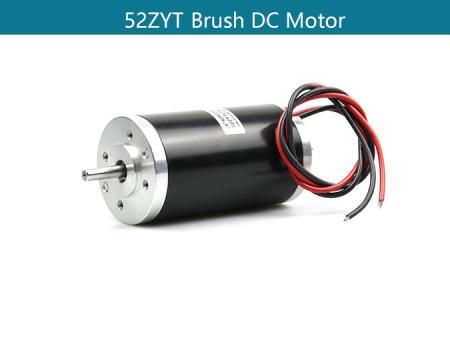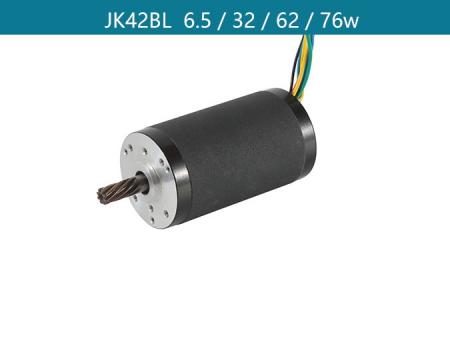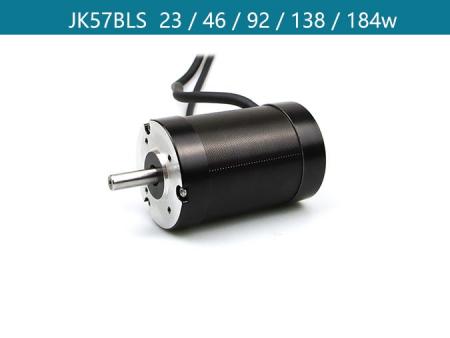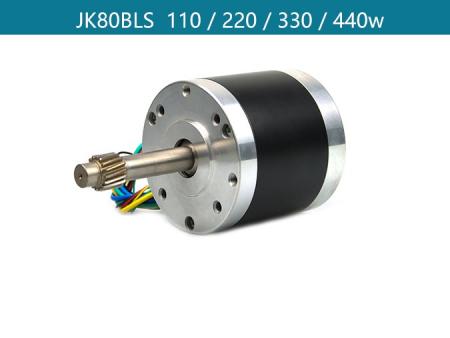In the realm of electric motors, the distinction between brushed and brushless DC motors is a pivotal one. The brand Jkongmotor offers a range of motors, each with its own unique features and applications. Let's delve into the key differences between brushed and brushless DC motors, particularly focusing on their speed control mechanisms and performance differentials.
Both brushed and brushless DC motors operate on the principle of voltage regulation. However, the implementation of this control varies significantly between the two types. Brushed DC motors utilize carbon brushes for commutation, allowing for control through traditional analog circuits like thyristors. On the other hand, brushless DC motors employ electronic commutation, necessitating digital control for operation. This difference in commutation methods leads to distinct speed control processes:
Brushed DC Motor Speed Control: In brushed motors, speed adjustment involves varying the supply voltage to the motor. By altering the voltage and current flowing through the commutator and brushes, the magnetic field strength changes, thereby adjusting the motor speed. This process is known as variable voltage speed control.
Brushless DC Motor Speed Control: Contrastingly, brushless motors maintain a constant supply voltage while modulating the control signal of the motor driver. Through a microprocessor, the switching rate of high-power MOSFETs is adjusted to achieve speed control. This method is referred to as variable frequency speed control.
Brushed DC Motors: These motors boast a simple structure, with a long history of development and mature technology. Initially, practical motors were predominantly of the brushed type, such as AC squirrel-cage asynchronous motors. Despite their widespread use, asynchronous motors faced inherent limitations, impeding technological advancement. The advent of brushless motors came later, following the invention of brushed DC motors. With their straightforward construction, ease of production, and controllability, brushed DC motors garnered extensive applications.
Brushless DC Motors: Known for their quick response speed and high starting torque, brushed DC motors offer smooth speed variation and minimal vibration from zero to maximum speed. They excel in driving heavier loads during startup. In contrast, brushless motors exhibit higher starting resistance (reactance), resulting in lower power factor and torque during startup. They tend to produce buzzing sounds and intense vibrations, especially during startup with lighter loads.
Steady Operation and Braking: Brushed motors deliver smooth operation during both startup and braking, owing to their voltage control mechanism. On the other hand, brushless motors, controlled digitally through frequency modulation, exhibit instability and vibration during startup and braking. They achieve stability only at constant speeds.
High Control Precision: Brushed DC motors, often paired with gearboxes and encoders, offer enhanced output power and control precision, reaching accuracies as fine as 0.01 millimeters. This level of precision is crucial for applications requiring exact positioning, such as precision machine tools. In contrast, brushless DC motors, due to their instability during startup and braking, necessitate additional mechanisms like position sensors or limit switches for precise positioning.
Cost and Maintenance: Brushed DC motors entail lower production costs, as their simple structure and widespread adoption have led to mature technology. In case of motor failure, replacing the carbon brushes, which are inexpensive, suffices for repair. Conversely, brushless DC motors are costlier due to their advanced technology and limited applications. Maintenance is minimal for brushless motors, primarily involving dust removal from bearings.
Brushless Advantages: Brushless DC motors, devoid of brushes, offer reduced electromagnetic interference and operate with minimal noise and friction. Their smooth operation and low maintenance requirements contribute to a longer lifespan and lower upkeep costs compared to brushed motors.
In conclusion, the choice between brushed and brushless DC motors hinges on the specific application requirements and performance considerations. Jkongmotor's diverse range of motors caters to various industrial and commercial needs, providing reliable solutions for speed control, precision, and efficiency in motor-driven systems.









View More(Total0)Comment Lists